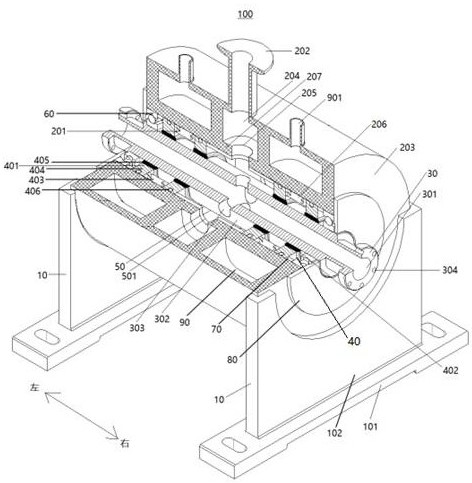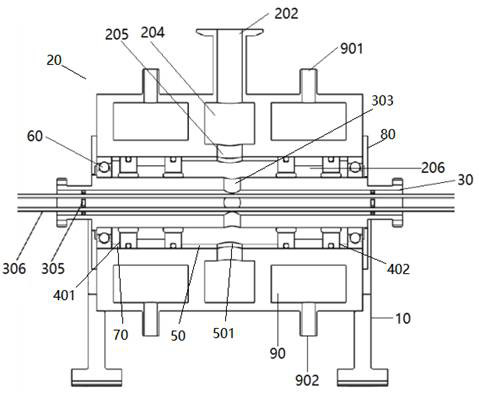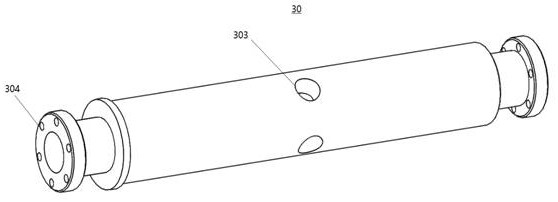Attachment structure of motor rotor with low temperature winding
A technology of motor rotor and auxiliary structure, applied in the direction of magnetic circuit shape/style/structure, electromechanical devices, electrical components, etc., can solve the problems of low temperature winding performance degradation, unavoidable multiple sealing surfaces, and unfavorable long-term stable operation of the motor, etc. Achieve the effect of preventing small leaks, avoiding motor downtime for maintenance and inspections
- Summary
- Abstract
- Description
- Claims
- Application Information
AI Technical Summary
Problems solved by technology
Method used
Image
Examples
Embodiment Construction
[0035] Embodiments of the present invention are described in detail below, examples of which are shown in the drawings, wherein the same or similar reference numerals designate the same or similar elements or elements having the same or similar functions throughout. The embodiments described below by referring to the figures are exemplary only for explaining the present invention and should not be construed as limiting the present invention.
[0036] Refer below Figure 1-Figure 6 A motor rotor attachment structure 100 with low temperature windings according to an embodiment of the present invention is described. The motor rotor attachment structure 100 with low temperature windings can continuously evacuate the motor rotor vacuum cavity 200 with low temperature windings.
[0037] Such as Figure 1-Figure 6 As shown, the motor rotor accessory structure 100 with low-temperature winding according to the embodiment of the present invention includes: a support base 10 , a frame 2...
PUM
 Login to View More
Login to View More Abstract
Description
Claims
Application Information
 Login to View More
Login to View More - R&D
- Intellectual Property
- Life Sciences
- Materials
- Tech Scout
- Unparalleled Data Quality
- Higher Quality Content
- 60% Fewer Hallucinations
Browse by: Latest US Patents, China's latest patents, Technical Efficacy Thesaurus, Application Domain, Technology Topic, Popular Technical Reports.
© 2025 PatSnap. All rights reserved.Legal|Privacy policy|Modern Slavery Act Transparency Statement|Sitemap|About US| Contact US: help@patsnap.com



